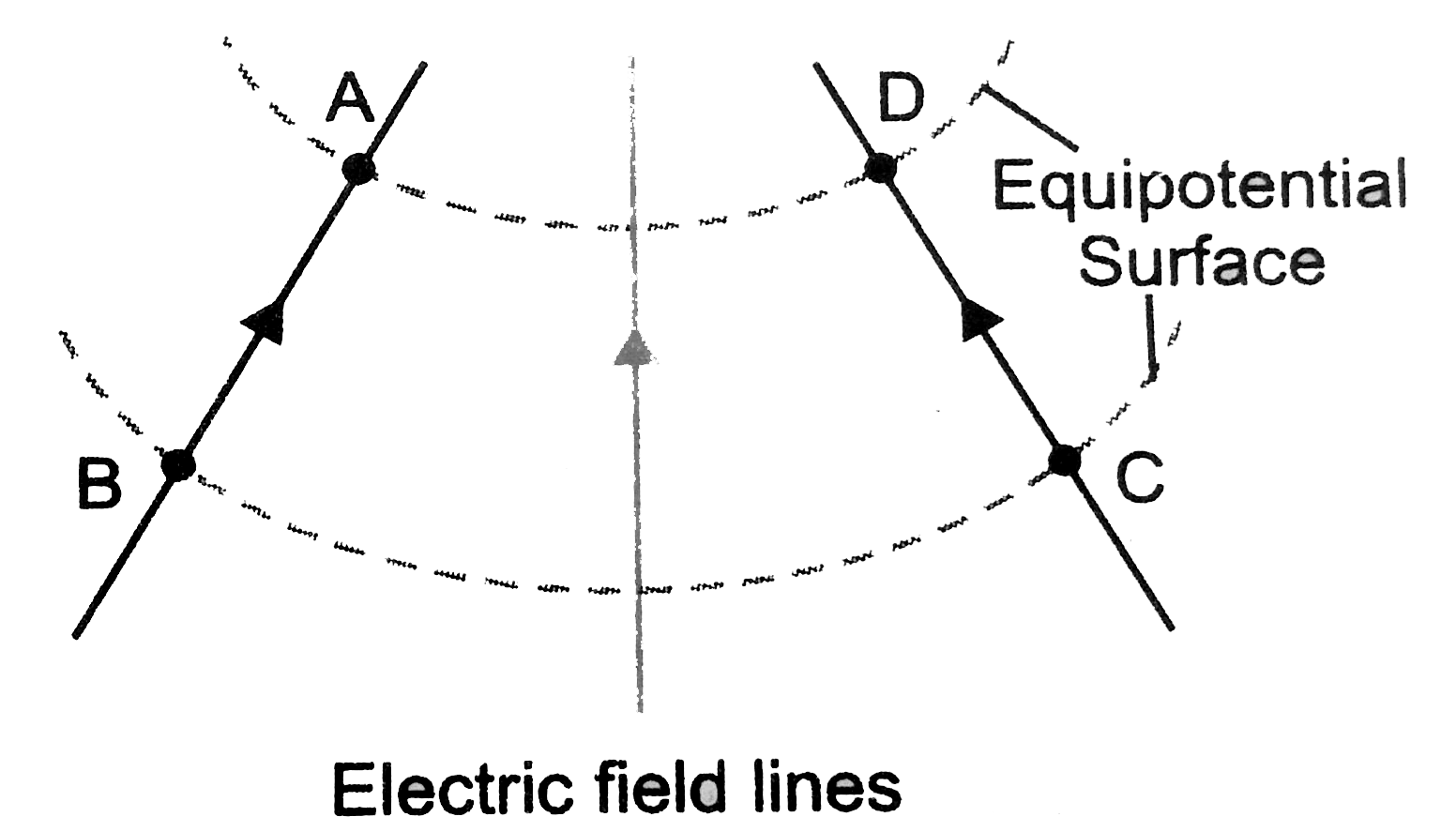In moving from A to B along an electric field line, the work done by the electric field on an electric is 6.4×10−19J . If ϕ1 and ϕ2 are equipotential surfaces, then the potential difference VC−VA is

−4V
4V
zero
6.4V
The correct Answer is:B
Wcl.=q(Vi−Vf)
or 6.4×10−19=−1.6×10−19(VA−VB)
or VA−VB=−4V or VA−VC=−4V(∴VB=VC)
or VC−VA=4V
Topper's Solved these Questions
- ELECTROSTATIC POTENTIAL AND CAPACITANCEBOOK - DISHA PUBLICATIONCHAPTER - ELECTROSTATIC POTENTIAL AND CAPACITANCEEXERCISE - EXERCISE 2: CONCEPT APPLICATOR
24 Videos
- ELECTROSTATIC POTENTIAL AND CAPACITANCEBOOK - DISHA PUBLICATIONCHAPTER - ELECTROSTATIC POTENTIAL AND CAPACITANCEEXERCISE - EXERCISE 2: CONCEPT APPLICATOR
24 Videos
- ELECTROMAGNETIC WAVESBOOK - DISHA PUBLICATIONCHAPTER - ELECTROMAGNETIC WAVESEXERCISE - Exercise - 2 : Concept Applicator
30 Videos
- GRAVITATIONBOOK - DISHA PUBLICATIONCHAPTER - GRAVITATIONEXERCISE - EXERCISE-2
30 Videos
Similar Questions
In moving from A to B along an electric field line, the work done by the electric field on an electron is 6.4×10−19J. If ϕ1andϕ2 are equipotential surfaces, then the potential difference VC−VA is.
 .
.
View SolutionWhen an electron moves from A to B along and electric field line as shown in Fig. the electric field does 3.94×10−19J of work on it. What are the electric potential differences
(VB−VA),(VC−VA),(VC−VB) ?

View Solution
Knowledge Check
In moving from A to B along an electric field line, the work done by the electric field on an electron is 6.4×10−19J. If ϕ1andϕ2 are equipotential surfaces, then the potential difference VC−VA is.
 .A−4VB4VCzeroD6.4V
.A−4VB4VCzeroD6.4VIf a particle moves on an equipotential surface of an external field, work done by the electric field on the charge is
APositiveBNegativeCZeroDDepends upon the direction of fieldElectric potential V and electric flux ϕ are
Aboth vectorsBboth scalarsCV is scalar, ϕ is vectorDV is vectoe, ϕ is scalar
The field lines corresponding to an electric filed is shown in the figure then ( E denotes electric field and V denotes electric potential)
View SolutionElectric potential V and electric flux ϕ are
View SolutionThe electric field lines coming out of an equipotential surface are
View Solution15 joule of work has to be done against an existing electric field to take a charge of 0.01 C from A to B. Then the potential difference (VB−VA) is :-
View SolutionA and B are two points in an electric field . If the work done in carrying 4.0C of electric charge from A to B is 16.0J, the potential difference between A and B is
View Solution
